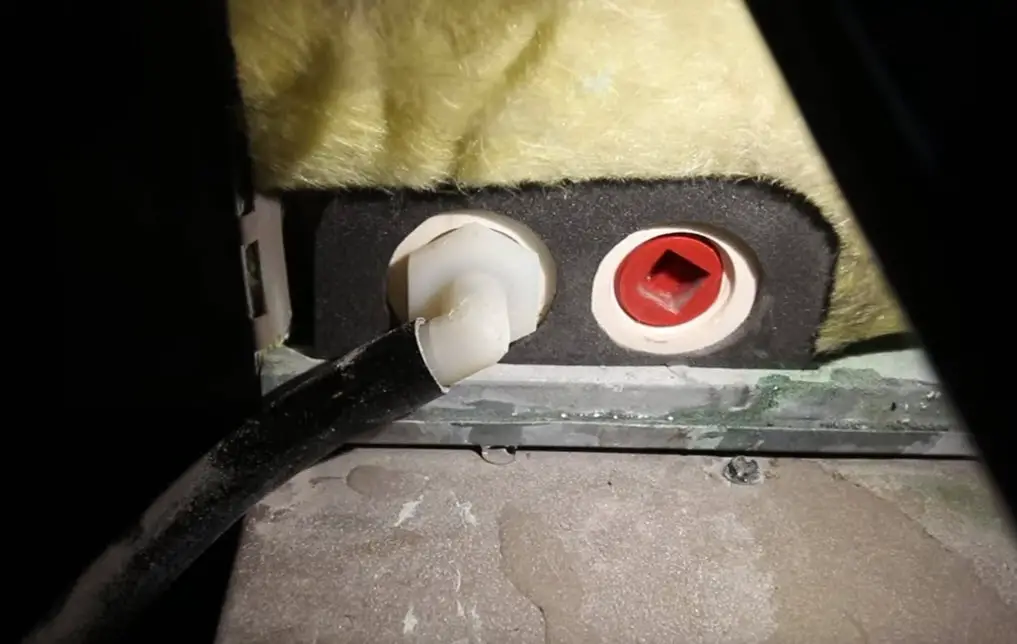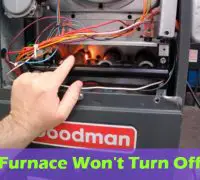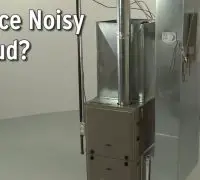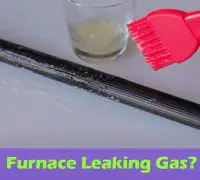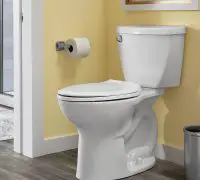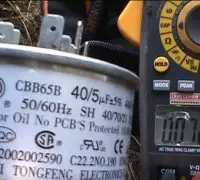Many things can go wrong in a household and water problems can lead to the most severe disasters. Water leaks can lead to all sorts of issues and cause mold to grow. If not managed on time, you and your family can get sick and spend thousands of dollars on house repairs.
Many homeowners deal with furnace leaking water. It’s a problem you must solve the moment it appears so the situation doesn’t worsen. When a furnace leaks, it’s only a matter of time until it fails and requires replacement.
Page Table of Contents
Why would a gas furnace produce water?
Before explaining how a gas furnace produces water, we need to explain how a furnace works. Once the indoor temperature drops below the thermostat’s set temperature, the thermostat will inform the control panel inside the furnace and start the heating cycle. The furnace turns on the ignition switch, opens the gas valve, and turns on the draft fan to create combustion. Then, the combustion will warm the heat exchanger and the gases inside the heat exchanger will go outside through an exhaust pipe. The blower fan will blow cool air from your house past the heat exchanger and the air will absorb the heat. The ventilation system will later push the warm air inside to warm your home.
The heating process won’t generate any water with a standard efficiency furnace (conventional furnace). The second heat exchanger will cause condensation if you have a high-efficiency furnace. It’s why high-efficiency furnaces are also knowns as condensing, whereas standard efficiency furnaces are non-condensing furnaces.
Once the burning gas goes out of the primary heat exchanger, it goes to the secondary heat exchanger—where the flue gas or the exhaust undergoes further heat exchanger. As a result, water vapor will form. Once the water turns from vapor to liquid, more heat will get into the secondary heat exchanger. It’s how the furnace manages to perform. The condensation will drop into the condensate pump or floor drain.
Which type of furnace do you have?
Before you track down the reason for the leak, you need to know which type of furnace you have. The easiest way is to examine the exhaust pipe. If the line is white plastic PVC, your furnace condenses (high-efficiency). Standard efficiency rating furnaces come with metal exhaust pipes, so they don’t generate condensation (they shouldn’t, anyway).
What are the reasons for the furnace leaking water?
Several things can make a furnace leak and the problems are specific to high-efficiency or standard-efficiency furnaces.
High-efficiency furnaces
A leak or clog in the condensate pipes
High-efficiency furnaces generate condensation through the heat exchange process. When it runs properly, the furnace should drain the condensation from the house through the condensate line and drain trap. If the condensate lines have leaks or clogs, you will notice water leaks around the furnace.
The condensate pump doesn’t work anymore
The condensate pump pushes the water through the pipes and away from the furnace. Pumps can develop mechanical issues, which may generate water leaks. The float and check valves can cause such problems. Improper installation of the condensate lines or buildup clogging the condensate trap or drain line is also a possible cause of the furnace leaking.
The condensate drain line is leaking
When the water has to exit, it goes through a condensate drain line. When the connection isn’t solid, it cracks or has holes; it will generate water leaks. A clogged drain line will make the condensation back up and create a water leak.
The condensate trap is clogged
A clogged condensate trap will also make the condensate travel back up and overflow out of the furnace. We want to highlight that not all high-efficiency furnaces will come with a condensate trap.
The inducer assembly is leaking
The condensation runs down the exhaust pipe, through the condensate drain hose and into the inducer. When the inducer assembly is cracked, water will leak out of the furnace.
Conventional furnaces
The metal exhaust pipe creates condensation
Furnaces with an AFUE rating below 90 are conventional furnaces and come with metal exhaust vent pipes and not white PVC pipes like high-efficiency furnaces. The exhaust vent takes the gases generated in the combustion process through the exhaust pipe and away from the house while the gases are hot. When the venting pipe doesn’t have the adequate size for the furnace, the gases will get trapped by the excess air. After they cool down, condensation will form and make the furnace leak water.
The coil has frozen
When the furnace leaks during the summer, frozen air conditioner coils could be the cause. It can happen because the filter is blocked and there’s dirt and debris on the coils. A refrigerant problem and poor airflow can also freeze the coils. They will turn into a block of ice and you should turn the furnace off the thaw the coils.
Other furnaces
Issues with the heat exchanger
Heat exchangers are crucial elements of the furnace and matter for combustion. The heat exchanger is a metal shield that doesn’t allow exhaust gases from the combustion process to get inside the ductwork and fill them with warm air. As the heat exchanger heats up, the metal will expand and cool. It will contract and return to its shape at room temperature. However, years of use will make the heat exchanger wear out and even crack. Once the heat exchanger cracks, carbon monoxide can circulate inside your house. It’s a life-threatening scenario and shouldn’t postpone fixing.
High-efficiency furnaces have a secondary heat exchanger (water goes from vapor to liquid to generate more heat into the secondary heat exchanger), creating more heat than standard furnaces for the same amount of gas. Standard efficiency furnaces only have one heat exchanger. The secondary heat exchanger also needs maintenance and servicing as it can lead to water leaking.
The furnace filter is dirty
Don’t wait to replace the furnace filter until you notice water leaking. A dirty furnace will block proper airflow. As a result, the furnace will overwork and eventually overheat. The furnace won’t be able to run like this for a long time and it will break down and lead to expensive repairs.
Consider replacing the furnace filter, as it’s a straightforward and affordable job. Make sure not to skip filter replacement and set a filter replacement reminder on your calendar every three months.
Other causes
Leaking humidifier
To improve comfort throughout the dry winter months, some homeowners will install a built-in humidifier to the heating system. Water will go through the humidifier all the time and if it becomes clogged or starts leaking, it will make the furnace look like it leaks water. There are specific methods to fix a leaking humidifier.
We recommend you contact the HVAC technician and have him examine the furnace and humidifier to discover the cause of the water leaking. Please remember that a humidifier can work even if the humidifier pad is clogged or dirty. A whole house humidifier with a clogged pad uses a lot of energy, makes the HVAC system perform slower than usual and wears out before its time.
A dirty or clogged humidifier pad will also trap moisture, altering indoor air quality. Bacteria will build up, mold will grow inside the house, and you and your family members may get sick.
Problems with the air conditioner
Sometimes, on the seasonal grey days, we need to run the air conditioner and turn on the heat at night. In such situations, the water leak might come from the air conditioner and not your furnace.
Air-conditioners absorb a lot of moisture from the air inside the house. They also come with condensate pipes and an internal drain system drips into a drain pan. All AC units feature a primary drain pan under the evaporator coil. Some AC units also feature a secondary drain pan beneath the unit. The drain pan is supposed to collect any condensation. The excess water will spill or leak out if it’s cracked or has holes. However, it will be a condensation leak from the air conditioner.
Plumbing issues
Sometimes, even if you think that your furnace leaks water, it could come from the plumbing system. Even if you might have to deal with a severe plumbing problem, it can mean that everything is fine with the furnace. Repair work and furnace replacement can get quite expensive. It doesn’t mean you shouldn’t manage the plumbing problem as soon as possible.
The plumbing pipes close to the furnace can make you mistake a plumbing leak for a furnace leak. A clogged or damaged plumbing pipe could cause the leak and you should contact a plumber or HVAC technician for further assistance.
